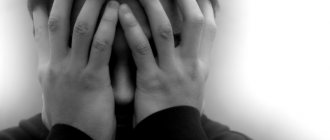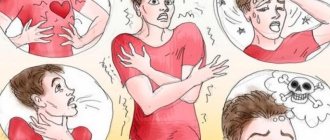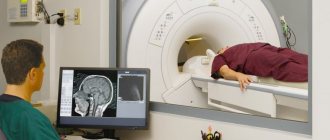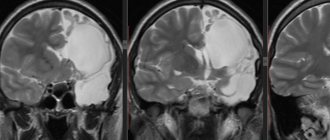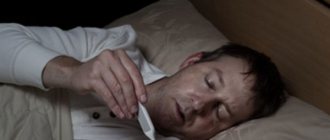Causes of the disorder
The main causes of neurosis are psychological factors that affect a person for a long time. In addition, physical stimuli also affect the disease.
Causes of neurotic disorder:
- Constant mental stress and stressful situations. When you are busy at work or school, an initial neurological syndrome appears, which gradually develops, and the disease is also affected by a bad mood in the family.
- Difficult-to-solve personal problems. The disease is often caused by debts, defaulted loans and constant pressure from people and companies demanding their money back.
- Obsessive state. Such neurosis appears due to a person’s absent-mindedness, when his inattention has led to negative consequences. The patient constantly doubts and thinks about his actions in a negative way.
- Psychosomatic syndrome. This form of neurosis appears without any particular reason in adult women. The appearance of the disease is associated with experiences in the inner world of a woman, the complexity of her character, or due to self-hypnosis.
Physical causes
The main physical causes of neurotic disorder are:
- Intoxication of the body. The process causes physical exhaustion of the body, which affects the mental state of the patient.
- Viral diseases. Influenza or tuberculosis cause neurological disorders after prolonged exposure.
- Bad habits. Neurosis appears due to the abuse of alcohol and tobacco.
- Pathologies of the nervous system. Congenital asthenia makes a person incapable of long-term physical work, which causes personality disorders.
Somatic and psychological causes
The disease is characterized by two groups of manifestations: somatic symptoms and psychological manifestations. Each type of neurotic disorder is characterized by a unique group of symptoms.
Psychological manifestations:
- diffidence,
- indecision,
- lack of life goals,
- complex,
- apathy,
- constant feeling of anxiety,
- inferiority complex,
- dissatisfaction with one's own appearance,
- chronic fatigue.
The patient does not take any active steps to improve his status and loses interest in advancing at work and in school. Drowsiness or trouble sleeping appears. In addition, the neurotic state associated with psychogenic symptoms is characterized by low or high self-esteem. In the severe stage, a personality disorder syndrome appears, which leads to difficulties in communication.
Establishing diagnosis
The diagnosis is carried out by a psychotherapist. His task: to collect a detailed history and assess the adequacy of the patient’s mental state. In addition to an oral conversation with the patient, the specialist offers him one of the most effective questionnaires.
Usually they use Bakirova’s technique. Her questionnaire has 300 statements that you must either agree with or refute.
In the most severe cases, the Aaron Beck Depression Scale is used. Due to the huge number of disorders and their manifestations, it is quite difficult to make a final diagnosis.
Symptoms of the disease
Physical manifestations include:
- periodic sharp pain in the heart area, which intensifies with physical activity,
- vegetative-vascular diseases,
- hypotensive syndrome,
- tremor of the limbs,
- increased sweating,
- dystonia,
- multifactorial anemia,
- lowering blood pressure.
A prolonged decrease in blood pressure greatly worsens the patient's condition. It leads to headaches and regular loss of consciousness.
Somatic signs of the disease
The following manifestations are characteristic of neurosis:
- constant bad mood
- irritation,
- touchiness and vulnerability,
- indecision,
- constant feeling of fear and anxiety,
- communication problems,
- fixation on negative situations
- rapid onset of fatigue during physical labor,
- absent-mindedness and inability to concentrate,
- constant expectation of something bad,
- bad dream,
- sensitivity to environmental changes,
- malnutrition or constant feeling of hunger,
- disorder of the vestibular apparatus,
- fainting and poor balance,
- stomach ache,
- fear of physical pain,
- sudden darkening of the eyes,
- decreased potency and sexual desire,
- cough for no reason
- loose stools and constant urge to urinate.
Features of panic attacks
They happen for no apparent reason. They are characterized by increased sweating on the palms, as well as difficulty and acceleration of breathing.
Additional symptoms of a panic attack:
- elevated temperature,
- chills,
- noise in ears,
- chest pain,
- pre-fainting state,
- loss of orientation in space.
During a panic attack, the patient develops a fear of death, because he is afraid of suffocating or dying from cardiac arrest. To stop panic syndrome, sedatives are used because it is necessary to normalize the breathing rate.
Ways to restore breathing speed:
- wash the patient's face with ice water,
- do breathing exercises,
- give ammonia a sniff if there is no hypersensitivity to it,
- Drink water periodically to restore your breathing rhythm.
Features of communication problems
Patients with neurosis experience the following problems during communication:
- slurred speech
- redness on the face,
- increased sweating,
- stuttering,
- loss of contact,
- nervous muteness,
- glossophobia.
Types of anxiety
With neurotic personality disorders, the following types of anxiety appear:
- Emotional. Characterized by constant negative thoughts and ideas, as well as the expectation of bad things.
- Physical. Characterized by muscle tension and tightness in the shoulder and neck area. Stiffness in movements and a feeling of constriction appear.
- Motor. It is characterized by periodic twitching of the limbs, the inability to stay in one place and in one position for a long time. The patient feels the need to constantly move in order to distract from anxiety.
Forms of the disease
The main forms of neurotic disorder:
- neurasthenia,
- psychasthenia,
- hysterical neurosis,
- psychosomatics,
- depressive neurosis,
- obsessive-compulsive disorder neurosis,
- hypochondriacal neurosis.
Neurasthenia has 3 stages of development:
- First stage. She is characterized by nervousness and irritability. There are no somatic manifestations, and mental capacity does not deteriorate.
- Middle stage. There is a decrease in the body's performance. The patient becomes lethargic, feels fear or indifference.
- Difficult stage. All symptoms intensify and pass. Prolonged apathy appears. In addition, the severe stage is characterized by the appearance of asthenic syndrome.
With obsessive-compulsive neurosis, thoughts and actions appear that are uncharacteristic for a person. He is unable to get rid of them or take control of them.
The hypochondriacal form is caused by an obsessive fear of being in a hopeless situation. Often a person is afraid of contracting an incurable disease.
The patient regularly has panic attacks and hysterics. Most symptoms are psychosomatic in nature.
Hysterical neurosis
This form of the disease is characterized by the following manifestations:
- seizures,
- hyperkinesis,
- paralysis,
- pain in different parts of the body,
- feeling of a lump in the throat,
- nausea and vomiting.
The actions of patients with hysterical neurosis are unpredictable. They are nervous and irritable even in a calm environment. Patients are characterized by inappropriate behavior. Disorders of the autonomic-vascular system appear, which causes hypotension and movement disorders: patients develop obsessive movements.
Hysterical attacks occur in the form of mental seizures. The patient screams loudly, rolls on the floor and actively waves his arms, and if there are people nearby, the neurotic rushes at them, trying to physically influence them. Acute hysterical neurosis causes the patient to want to commit suicide.
Depressive neurosis
This form of the disease manifests itself as a deep neurotic and psychogenic syndrome. It is caused by prolonged depression, which becomes chronic.
Etiology of depressive neurosis:
- sleep problems,
- regular poor condition,
- low self-esteem,
- loss of purpose in life,
- painful sensations.
The disease has the following physical manifestations:
- disruption of the cardiovascular system,
- increased sensitivity to external stimuli,
- dysfunction of the gastrointestinal tract,
- constant dizziness,
- tearfulness.
The patient’s performance does not decrease, but his emotional state does not allow him to fully engage in physical labor. With depressive syndrome, a person feels unnecessary. The patient considers himself abandoned and feels sad. Personality disorders and inferiority complex appear. With a prolonged illness, sexual dysfunction and hypotension appear.
Stages of development of neurosis
Neuroses develop according to a certain pattern:
- A neurotic reaction is a short-term reaction of the autonomic nervous system. Hysteria develops from emotional excitement, crying, anxiety, getting stuck in trauma, asthenia. However, these symptoms are reversible.
- A neurotic state is a violation of the system of interpersonal contacts. The patient's demands on the people around him increase, and the demands on himself decrease, since the patient is in the position of a victim. These violations are also reversible.
- Neurotic personality development is a condition accompanied by psychopathological symptoms. Adding paranoia to hysteria, other personal qualities are formed. The person becomes very tired, is unable to concentrate, and lacks strong desires and interests. Patients may become overly punctual, pedantic, want to attract attention, and show selfishness and capriciousness.
At the last stage, the neurotic evaluates the world around him only through the prism of emotionality and quickly changes opinions. Phobias are accompanied by obsessive states, anxiety for any reason, fixations, pedantry, which depends on the form of neurosis.
Psychotherapy
Methods of psychiatry and psychology for neurosis include procedures to normalize the patient’s views on the situation and environment. To do this, the causes of the disease are diagnosed.
For the treatment of neurosis the following is used:
- cognitive therapy,
- conversation,
- hypnosis.
Recovery takes place only after the patient has realized the cause of his fears and obsessions.
Cognitive therapy
Using this technique, the patient is immersed in situations that led him to an obsessive feeling of anxiety.
The patient assesses the situation differently and realizes that the reasons for his fear are insignificant. To enhance the effect of treatment, the patient is put into a trance state using hypnotic methods. The psychologist talks with the patient about life goals and further actions to normalize the mental state. The patient needs to find new hobbies to distract himself from negative thoughts.
Methods for treating neurosis
Before starting treatment, it is necessary to accurately diagnose the form of the disease. Methods of psychiatry and psychology, as well as medications, are used for treatment. Pharmacological agents are prescribed when the patient has severe neurosis and many degenerative processes occur in his body.
Several specialists treat neurosis: therapist, psychologist, psychiatrist. Treatment depends on the symptoms and the level of discomfort they cause in the patient. Treatment options include psychotherapy, cognitive behavioral therapy, art therapy, psychoactive medications, and relaxation exercises. Body detoxification, vitaminization, and proper nutrition are used.
Four main classes of drugs are used in the treatment of neuroses:
- Selective serotonin reuptake inhibitors (citalopram, fluoxetine, paroxetine, sertraline) are drugs that relieve symptoms by blocking the reabsorption or uptake of serotonin by nerve cells in the brain
- Serotonin-norepinephrine reuptake inhibitors (duloxetine) – increase levels of serotonin and norepinephrine by blocking their reabsorption by cells in the brain. Improves mood and reduces anxiety.
- Tricyclic antidepressants (amitriptyline, imipramine) also suppress the reuptake of the neurotransmitters serotonin and norepinephrine.
- Benzodiazepine (clonazepam, diazepam, lorazepam) – helps reduce muscle tension and physical signs of stress and anxiety. Used in short-term courses of therapy.
Other drugs used include monoamine oxidase inhibitors, anticonvulsants, beta blockers, and second-generation antipsychotics.
Psychotherapy
Psychiatrists and psychologists treat neuroses in various ways. The psychoanalytic approach involves helping to become aware of the repressed impulses, feelings and traumatic memories that underlie symptoms. The specialist helps the patient achieve personal growth and deep understanding of himself.
The desensitization technique is used if the patient experienced a stressful event and did not have time to adapt. A patient who is afraid of heights will gradually learn to stay at heights with a gradual increase in height.
Modeling of effective behavior or learning by example is used. Cognitive and interpersonal approaches involve discussing with a psychotherapist thoughts and emotions that precede symptoms of neuroses. The specialist tries to replace them with more realistic interpretations of events and human reactions to them.
Drug therapy
If there is no effect from cognitive psychotherapy, the following pharmacological agents are prescribed:
- tranquilizers,
- antidepressants,
- psychostimulants,
- neuroleptics,
- nootropic drugs.
Antidepressants and neuroleptics
Antidepressants are drugs that have a sedative effect on the body. They are used for neuroses associated with constant feelings of anxiety and fear, as well as obsessive thoughts. They are used in tablet form and parenterally. An effective remedy is Amitriptyline.
Neuroleptics are drugs with antipsychotic effects. They are prescribed for hysteroid neurosis. The use of these drugs has a calming and hypnotic effect, and also eliminates hallucinations. Their disadvantage is that with prolonged use, apathy and depression appear. An effective remedy is Aminazine.
Nootropic drugs and psychostimulants
These drugs have a stimulating effect on the body. Prescribed for depressive neurosis.
Effect of the drugs:
- improvement of emotional state,
- decreased feeling of fatigue,
- stimulation of a surge of energy and vigor,
- increased thinking abilities,
- prevents the feeling of drowsiness.
This effect of the drugs is due to the presence of caffeine and adrenaline in them, which stimulate the body to function normally. The negative side of the funds is that they activate the reserve capabilities of the human body. They do not reduce symptoms, but temporarily hide them. With prolonged exposure to the body, addiction occurs.
Effective means:
- "Nootropil"
- "Benzedrine"
- "Sidnokarb"
- "Phenamine"
- "Amphetamine".
You should drink such drugs at a dose of 7–12 mg no more than 2 times a day. "Sidnocarb" is drunk only in the 1st half of the day.
Tranquilizers
These include drugs with a similar effect to antipsychotics, but with a different mechanism of action. They are prescribed during the period of pathogenesis to stimulate the production of gamma-aminobutyric acid. The drugs have a relaxing and sedative effect. They are used in short courses for forms of neurosis associated with obsessive thoughts.
The effect of such drugs leads to a decrease in feelings of anxiety and fear, as well as an improvement in the overall mental state. They are prescribed as an additional means to psychotherapy.
With a large dosage of a tranquilizer at the initial stage of treatment, the feeling of weakness, drowsiness increases, and mild nausea and vomiting appear. The drugs do not interfere with brain activity, and side effects disappear after several uses. Contraindicated for people whose work requires increased attention, since the effect of tranquilizers leads to a decrease in attentiveness.
For the treatment of neurosis the following is prescribed:
- "Chlordiazepoxide"
- "Diazepam"
- "Tazepam"
- "Eunoctinus"
- "Elenium"
- "Seduxen"
- "Oxazepam"
- "Radedorm"
- "Librium"
- "Valium."
These drugs are benzodiazepine derivatives. They have anticonvulsant effects and reduce anxiety. They have a hypnotic effect and normalize the functioning of the vegetative-vascular system. In addition, Andaxin and Trioxazin are used, which have psychopharmacological effects.
The choice of tranquilizer depends on the symptoms of a neurotic disorder, as well as on the individual characteristics of the patient’s body.
The dosage starts with 5 mg of Seduxen or 8–10 mg of Librium. Drink the medication daily, gradually increasing the volume of medication by 1–2 mg. It is prohibited to take more than 60 mg of tranquilizers per day.
Tonics
Such drugs are additional treatments that are prescribed for asthenic syndrome.
Examples of tonic drugs:
- Ginseng root. Take 15 mg 3 times a day before meals.
- Aralia tincture. Drink 25 drops 2 times a day,
- Leuzea extract. Take 18 drops 2 times a day before meals.
- Schisandra tincture. Take 15 drops 2 times a day.
- Tincture of enticement. Drink 25 drops 3 times a day.
- Eleutherococcus extract. Take 20 g 30 minutes before meals 3 times a day.
- Tincture of sterculia. Drink 3 times a day, 25 drops.
A useful remedy is Sapartal. It is taken 5 mg 3 times a day after meals. "Pancrotin" is drunk 2 times a day, 30 drops. To supplement treatment, sleeping pills and auto-training are prescribed.
Preventive measures
It is better to prevent any neurosis than to treat it. If possible, you should avoid any situations that pose a potential threat to mental balance.
This applies most of all to family relationships and raising children. It is in the family that children sometimes receive injuries that haunt them throughout their lives, and then they grow into neurotic personalities.
But it is unrealistic to foresee and prevent all stressors. Then, in case of psychological trauma, you need to find a competent doctor as quickly as possible. Several psychotherapeutic sessions will destroy the incipient disorder in the bud, and will not allow it to grow into a phobia or result in a panic attack.
The right way of life and the right way of thinking will never allow a person to reach the point beyond which a neurotic disorder begins.
Music therapy
The use of music in medicine is prescribed for neuroses, as well as for the treatment of stuttering and psychosomatic diseases. Melody and rhythm, acting on selective areas of the brain, relieve tension and anxiety, and music therapy relaxes muscles and normalizes breathing.
Music stimulates the production of endorphins, which improves your overall emotional state. Therapy is divided into activating and calming. Classical music relaxes and calms the patient, and more active compositions distract the patient from bad thoughts.
Prevention
To prevent the appearance of a neurotic disorder, you should normalize your work and life schedule, ensure regular rest and have a favorite pastime. It's good to walk. In addition, to relieve emotional stress, they keep a personal diary in which they express all negative thoughts.
Primary prevention:
- preventing psychologically traumatic situations at work,
- improvement of the living environment,
- eliminating conflict situations in the family.
Secondary prevention:
- vitamin therapy,
- elimination of addiction to alcohol and cigarettes,
- normalization of sleep patterns,
- giving up coffee
- creating a balanced diet,
- treatment of all diseases,
- improving living space lighting,
- suggestion and self-hypnosis.
General information
Neurotic disorders (neuroses) are a group of disorders that represent a psychopathological reaction to an insoluble and unbearable traumatic situation. All neurotic disorders are reversible, but tend to be protracted. Despite the absence of severe mental disorders, neuroses significantly worsen the quality of life of patients, negatively affect their emotional state, and limit the possibilities of professional fulfillment and building successful personal relationships.

